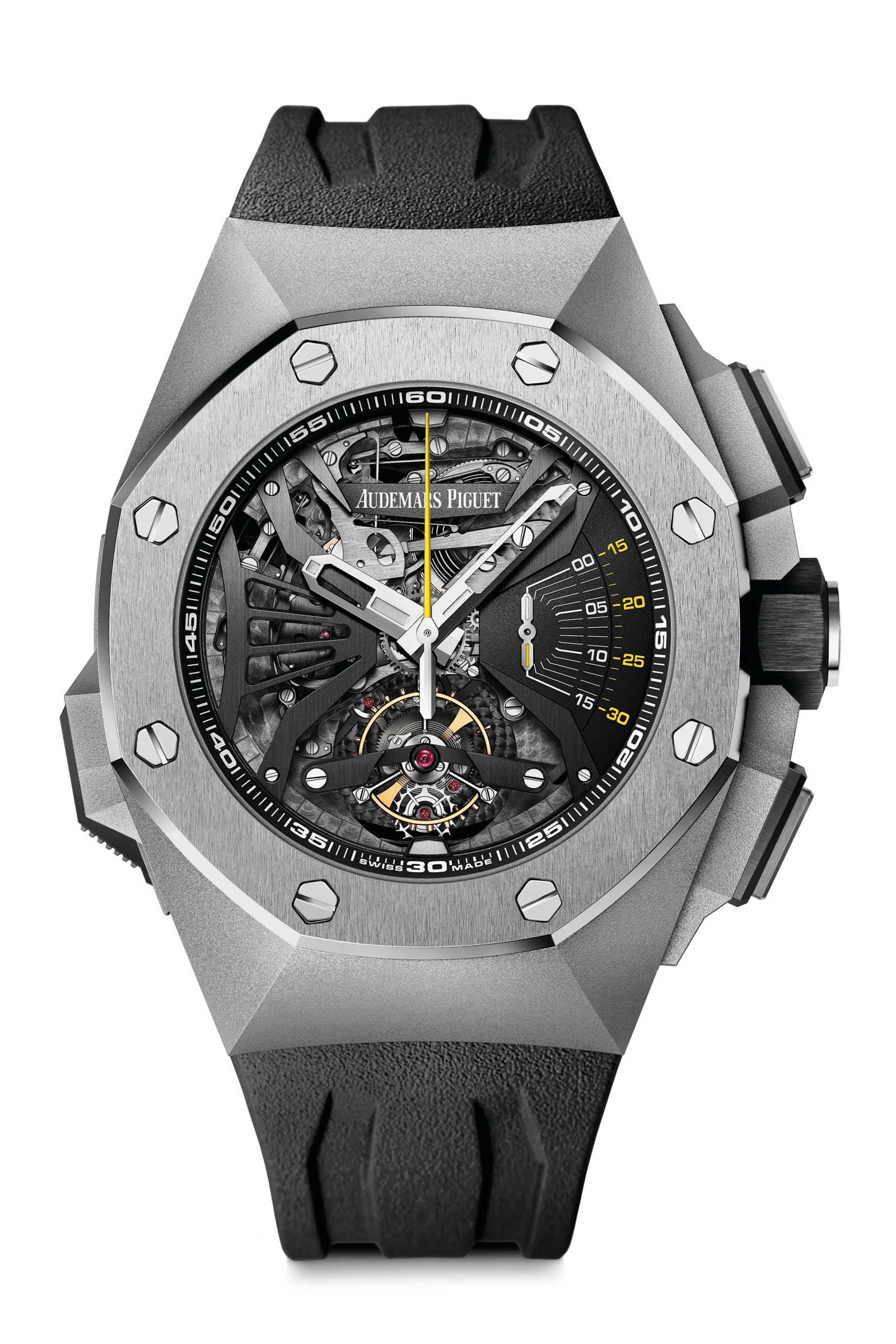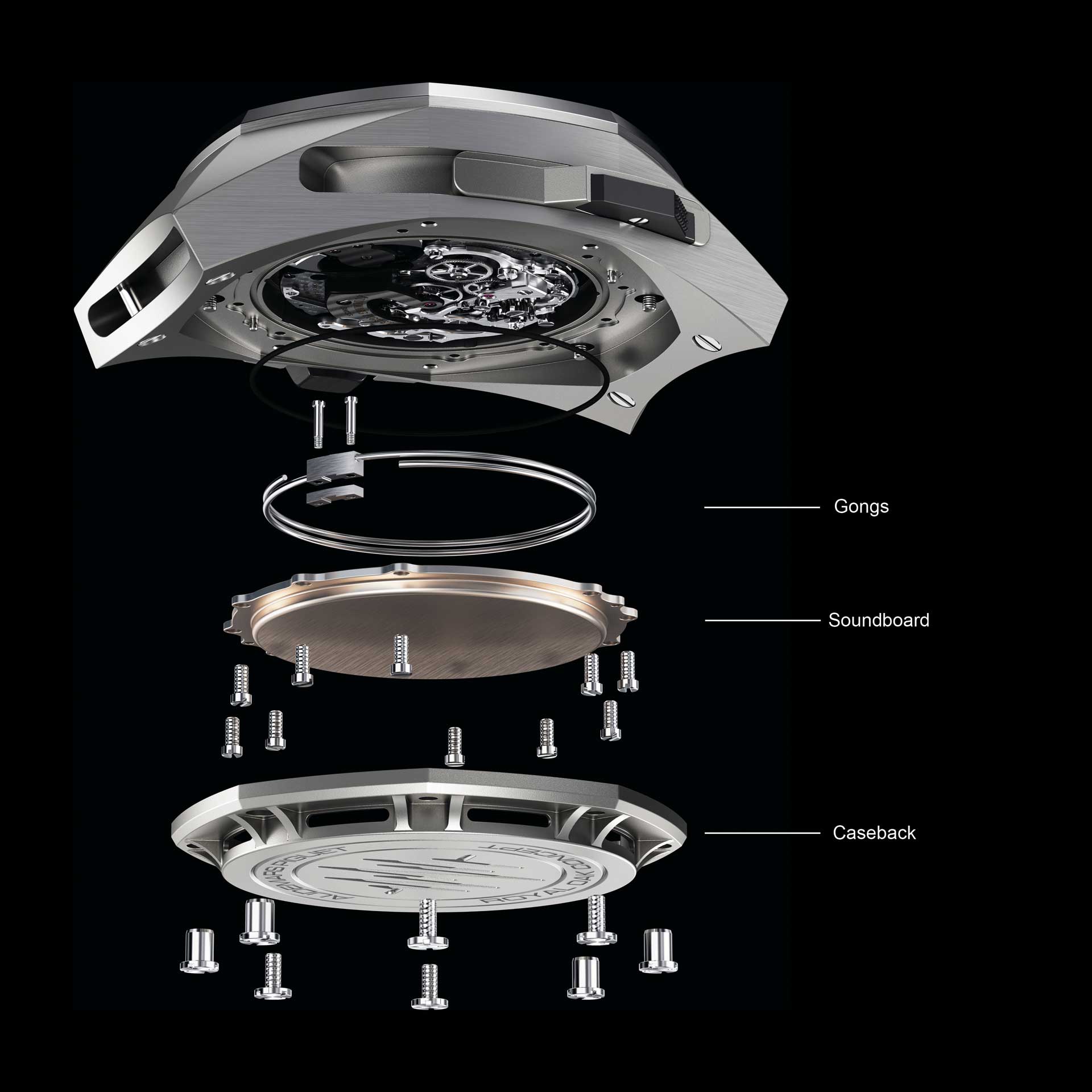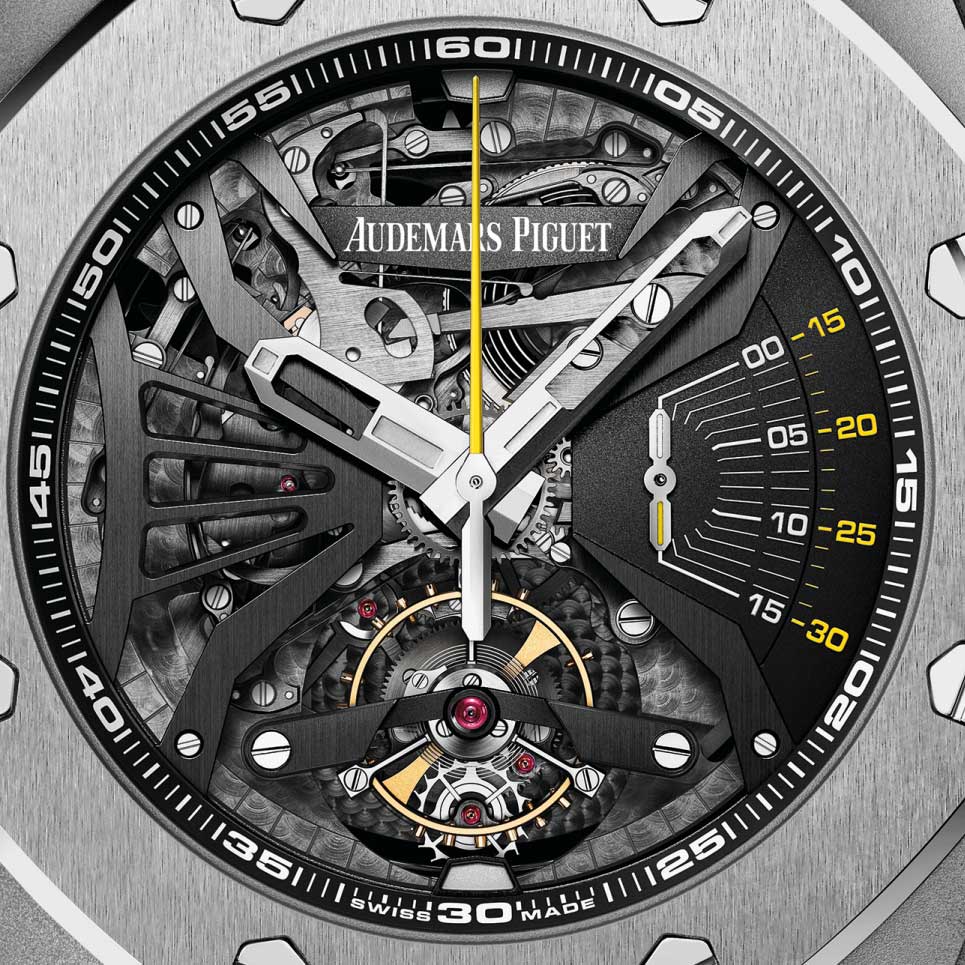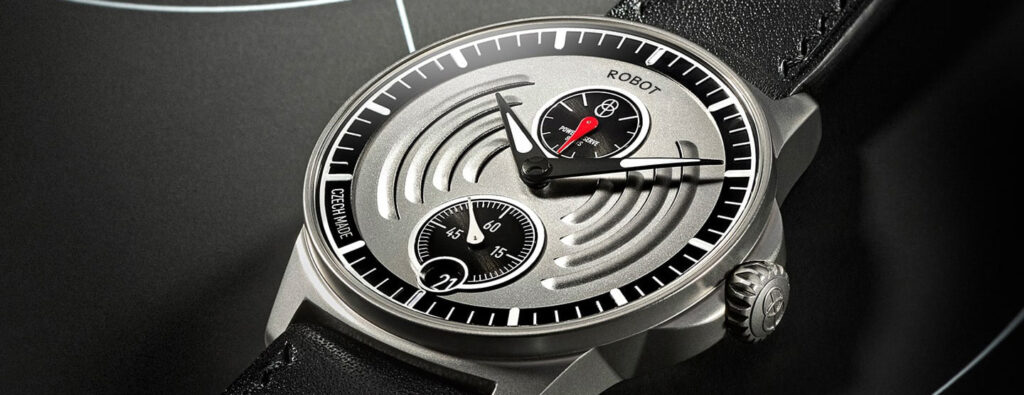Audemars Piguet
The Audiophile’s Minute Repeater
Audemars Piguet
The Audiophile’s Minute Repeater
Minute repeaters have always commanded skills of watchmakers more akin to those who produce musical instruments. A minute repeater must sing, its chiming must be mellifluous. Audemars Piguet’s latest and most ambitious addition to the canon, the Royal Oak Concept Supersonnerie, throws down a new horological gauntlet. After the ultra-thin wars, the “who can cook up the most bizarre complication?” and “who can fit the most tourbillons into one case?”, the craze for minute repeaters has been quietly – and I say that with no little irony – taking hold.
Of late, watch houses ranging from Patek Philippe to Bulgari via Jaeger-LeCoultre have been upping the ante with ever-more impressive designs. For Audemars Piguet, the decision has been made not simply to produce an incrementally better repeater, but to pick up the goalposts and move them so far back as to leave the rest breathless – and by an absurd margin. What they’ve chosen to do is address something ignored en masse by the watch industry since the move from pocket watches to wristwatches: to make a chiming watch usefully louder.
Simply put, a minute repeater in a pocket-watch case measuring 3in or so across is exponentially louder than a minute repeater in a 30-40mm wristwatch case. Admit it: unless the room is silent, you can barely hear a typical minute repeater and, even then, it has to be held up to your ear. Their quietness would be comical if we weren’t talking about watches that cost, alarmingly, six figures or more.

Audemars Piguet Royal Oak Concept Supersonnerie
The right measure
There are two overriding considerations in the design of a minute repeater, which are wholly sound-related, rather than to do with timekeeping: sound quality and volume. Let’s dispense with sound quality as it is wholly subjective. You either like the sound of a specific repeater or you don’t – period. Whatever the lab rats tell you, you cannot measure how a device will actually sound. If you could, every violinist alive would have an exact facsimile of a Stradivarius.
Specifications are important, as you’ll see, but measurements such as distortion and frequency response can only suggest what something sounds like and that’s only if they are grossly exaggerated, for example too much bass. Absolutely no measurements exist to tell you if the sound is natural, authentic or realistic – all of the virtues you look for when buying headphones or a hi-fi (unless you’re a hip-hop or heavy metal fan, in which case bass and volume are more important).
Volume, though, is not even remotely subjective – A is either louder than B, or it isn’t. It is not a matter of opinion to be challenged by rivals – the numbers do the talking. This is not to say that the AP Supersonnerie was devised without comprehensive regard for the musicality, and discussions with Claudio Cavaliere, Global Brand Ambassador and one of the overseers of the project, addressed this by pointing out what the project’s goals included.
In 2006, AP set, among its objectives, not only to “define a new milestone in the chiming watch segment” but to recapture the sound from a timepiece of 1924, and to achieve “a beautiful and clear sound, which would be distinct from other minute repeater timepieces.” Of this part of their goal, they needn’t have worried because – as I hope I conveyed above – sound quality is a matter of taste. Also, every minute repeater I have ever heard from a reputable house has been entrancing, delightful.
If sound quality is in the ear of the beholder, volume is in the numbers from the test gear. Which leads us to the real challenge: that of making a minute repeater wristwatch that’s as loud as its pocket watch ancestor. Audemars Piguet’s sound-research programme to study and understand the factors that influence the sonic performance of a watch used, as a reference by which to gauge the performance of their creation, “the sound produced by a pocket watch or a non-water-resistant wristwatch manufactured at the beginning of the 20th century.”
They named this programme “Acoustic Research”. (I’m not sure if AP is aware that “Acoustic Research” is one of the oldest and most important names in audio, and which still exists, “AR” having patented the acoustic suspension loudspeaker over 60 years ago, the template for most modern speakers.) In 2015, AP presented the Royal Oak Concept RD#1, precursor to 2016’s the Royal Oak Concept Supersonnerie.

Audemars Piguet Royal Oak Concept Supersonnerie
The unholy trinity
And how did AP go about not just making the watch louder, but perceptibly, inarguably and measurably louder? The company ended up with three patented innovations, one of which acts directly on sound levels. Here my hi-fi geekness proved useful: Patent No. 2 is a radical new case that prevents sound absorption and boosts amplification – which is plain English to anyone who ever “got” audio. Its gongs are not fixed to the main plate but are attached to a new device that acts as an internal soundboard, and the gongs transmit vibrations directly to the soundboard, thus improving the transmission of sound. Those of you who love minutiae will note that Jaeger-LeCoultre also thought laterally with its Master Minute Repeater, attaching the gong to the crystal, using it as a soundboard – pure genius.
Now AP’s claims, but backed by actual numbers. Unusually, instead of the sound being damped or muffled, “the sound transmission is even better when the watch is worn. Its acoustic intensity is 10 times stronger than standard minute repeaters”. The case construction was developed according to the principles of stringed instrument manufacture, “trying to create the perfect sound wave path when the watch is placed on the wrist”. One challenge was doing this while keeping the watch water-resistant.

In effect, AP “re-thought” the case, just as Jaeger used lateral thinking and employed the crystal. As AP explained, a traditionally constructed case acts as the interface between the vibration, or the actual sound, and the air. When the minute repeater touches the skin, which is soft and, therefore, absorbent, parts of the vibrations are absorbed. This affects not only the loudness but the sound quality, as you can test for yourself by putting a blanket over a speaker in your home.
In the Royal Oak Concept Supersonnerie, the soundboard, made of a type of copper alloy, acts as the interface between the sound and the air. As the membrane interacts with air inside the case, the wrist does not absorb the vibrations, but propels the sound to the listener. “The openings on the case-back release the air pressure on the outside and let frequencies escape, making sure that they are well-perceived by the human ear.”
Number crunching
Now the geekspeak, in numbers. AP’s research has produced a wristwatch that delivers “acoustic intensity equivalent to ten minute repeater wristwatches with traditional construction striking at the same time” or +10dB compared to one traditional minute repeater. The acoustic intensity produced by the Supersonnerie is equivalent to three minute repeater pocket watches striking at the same time, or +5dB compared to one traditional pocket watch. Moreover, the length of the sound – the resonance of the gongs, or what audiophiles know as “decay” – is two times longer than for a minute repeater wristwatch with traditional construction, and matches a traditional pocket watch, at 1.5sec.
AP did all the right things in acoustic terms, using an anechoic chamber and following ISO 3745 norm with the distance between the watches and the recording device being 1m. The resultant figure? The Royal Oak Concept Supersonnerie delivers sound pressure levels of 54.5dB at 1m. To show you how impressive that is, it’s inbetween a dishwasher and a vacuum cleaner. A typical wristwatch minute repeater is lucky to deliver – on a good day – 36dB-40dB, or 1/8th to ¼ the sound of the AP. Or that of light rainfall.
I would like to see an independent acoustics lab measure the AP against others claiming exceptional loudness for their minute repeaters. But I wouldn’t want the responsibility for a dozen-or-so minute repeaters, nor the role of arranging the testing. So far, I have yet to hear of any wristwatch repeater claiming higher than 54.5dB.
For the Audemars Piguet price of SFr.520,000, you could buy an absolutely killer sound system that will deliver more music than any minute repeater, but that’s not the point. What the Royal Oak Concept Supersonnerie does is – finally – free owners of minute repeater wristwatches from straining to hear – or to share – the magic.












